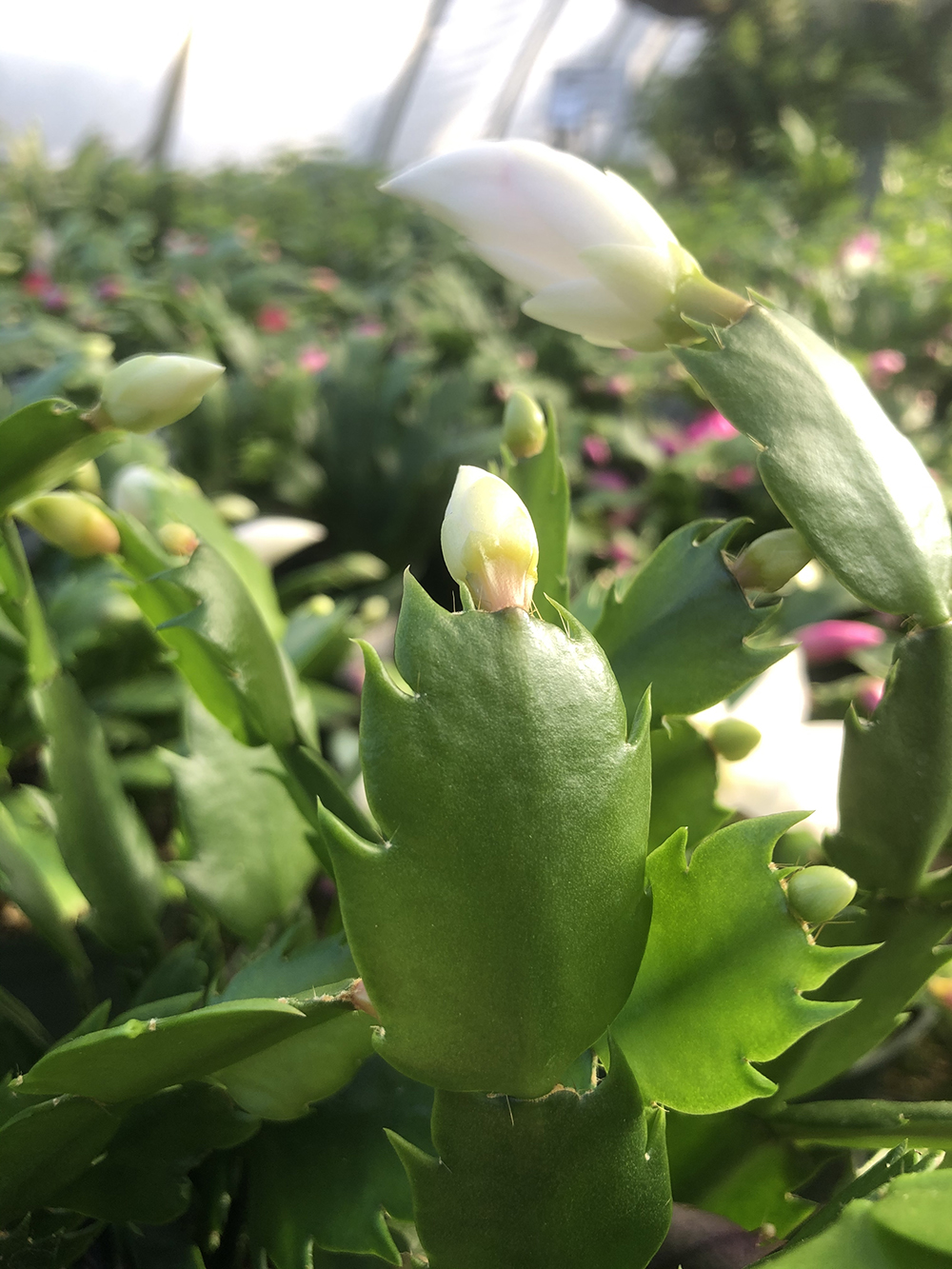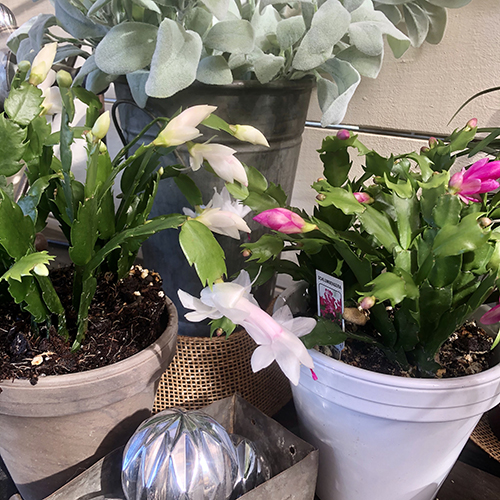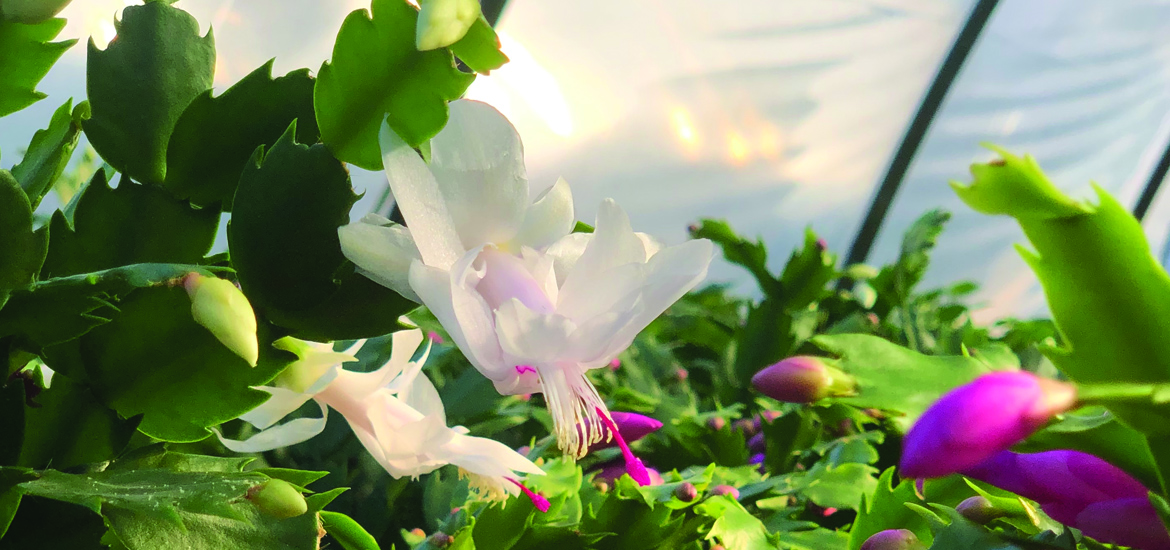How to Grow Christmas Cactus

There are actually 3 different kinds of cactus that look similar and have one of three names; Thanksgiving, Christmas and Easter cactus. While it may seem like they are all the same, there is a difference. It’s all in the leaf shape.
Thanksgiving Cactus
Although they are commonly called Christmas cactus, the ones pictures above are technically Thanksgiving cactus. See how the the leaves have pointed, claw-like projections on leaf edges? That is the telling sign that you are looking at a Schlumgera truncata, or Thanksgiving cactus.
Christmas Cactus
Christmas cactus, or Schlumgera bridgesti, look very similar but instead of pointed projections, they are more rounded.
Easter Cactus
Rhipsalidopsis gaertnerrii is the botanical name for Easter cactus. The leaves of this plant have gently scalloped edges, with scallops near the center of the leaves.
Growing Tips
When it comes to care, it doesn’t really matter which one of these beauties you find, they all have similar care needs! All three are short day plants that require 12-14 hours of darkness per day and cool temperatures (nigh time temps of 60 to 65 degrees F) to induce blooming. If not already blooming, place your cactus in a cool, dark area for 12-14 hours per day until bud set.
Christmas and Thanksgiving cactus require about four to six weeks of short days in order to bloom. That would normally happen naturally around mid-October, which is why you start seeing blooming cactus available now. You might be able to get a second, smaller spring re-bloom. To encourage this, just return the plant to short day conditions for the required amount of time. Easter cactus require 8-12 weeks of short days.
During the short day period and subsequent bloom period, discontinue fertilizer use. Also during short day period, reduce watering.
As far as location, a seldom used room on the lower level of a house is a good spot. Once buds appear, bring the plant into a warmer, brighter location and enjoy the blooming show! Place in bright, indirect sunlight. Water only when the top inch of soil is dry and avoid fertilizing or repotting during bloom.
If buds drop, it can be due to drafts, overly warm temperatures, too much water or direct sun. These cactus plants tend to do best root bound; one more way they are low care! Avoid overwatering, which can cause root rot. Reddish leaves can indicate too much sun, lack of phosphorus or lack of water.
These plants make wonderful gifts that can be handed down from generation to generation. There are reports of plants being over 100 years old! Who is ready to start a new holiday tradition?

